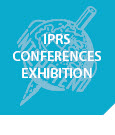CAFM Data Foundations: Assets, Rooms, and Maintenance Ties
When you manage a facility, your decisions hinge on accurate data about assets, rooms, and maintenance activities. If you’re not tying these elements together, you risk inefficiency and missed opportunities. With the right approach, you’ll see how interconnected data forms the backbone of every effective CAFM strategy—impacting everything from room usage to regulatory compliance. But how do you set up and sustain this data foundation most effectively? The real payoff starts when you…
Understanding the Role of Data in CAFM Systems
Data is a fundamental component of any effective Computer-Aided Facility Management (CAFM) system. Accumulating precise information regarding site geography, asset locations, and maintenance histories is essential for making informed decisions. This comprehensive data allows for optimal resource allocation throughout facility spaces and facilitates proactive maintenance planning.
By tracking maintenance tasks with a CAFM system, organizations can ensure that these tasks are completed in a timely manner, which contributes to improving operational efficiency. Additionally, maintaining contractor information within the CAFM system promotes more efficient vendor management by enabling tracking of certifications and performance metrics.
Integrating these data points enhances the ability to optimize asset performance while ensuring that facility spaces remain compliant and well-maintained.
The role of data in a CAFM system can't be overstated, as it's crucial for effective facility management and decision-making processes.
Key Asset Data for Effective Facility Management
Tracking key asset details such as location, condition, and maintenance history within a Computer-Aided Facility Management (CAFM) system is essential for effective facility management.
Having accurate asset data allows facilities managers to monitor asset performance and schedule planned maintenance, which can reduce the likelihood of unexpected equipment failures.
With integrated asset data, facilities managers can optimize resource allocation, ensuring that assets are located in areas of greatest need while also maintaining compliance with data protection regulations like GDPR.
Additionally, analyzing maintenance history enables managers to assess maintenance costs and identify trends, which can inform decisions regarding asset life cycle management.
Optimizing Room Utilization and Space Management
Facilities often encounter challenges related to underutilized or overcrowded spaces. A Computer-Aided Facility Management (CAFM) system can assist in optimizing room utilization and improving space management. By monitoring occupancy rates and analyzing historical usage data, CAFM systems facilitate informed decision-making regarding space planning and operational adaptations.
CAFM systems typically include integrated reservation modules that help prevent double bookings, thereby fostering more effective resource utilization.
Additionally, real-time occupancy monitoring can be achieved through the use of IoT sensors, which support the ability to make dynamic adjustments to space allocation according to organizational needs.
Utilizing these technologies can lead to more comfortable and organized environments that enhance productivity while minimizing wasted space.
Linking Maintenance Activities to Assets and Spaces
Effective facility management requires the integration of maintenance activities with the assets and spaces they impact. By employing a Computer-Aided Facility Management (CAFM) system to connect maintenance activities, organizations can achieve real-time visibility over work orders and preventive maintenance tasks.
Utilizing accurate asset data, including condition and location, facilitates automated scheduling, enhances operational efficiency, and minimizes downtime.
Linking maintenance efforts directly to specific rooms or areas enables better tracking of resource usage and simplifies the allocation of costs. Analyzing maintenance trends can contribute to informed decision-making based on empirical data.
This integration can lead to improved asset longevity, more effective budgeting, and a proactive approach to mitigating costly emergency repairs. Overall, this structured approach supports the overall performance and reliability of facilities.
Importing and Integrating Data: Methods and Best Practices
Importing and integrating data into a Computer-Aided Facility Management (CAFM) system is essential for establishing an efficient facility management platform. The initial step typically involves using Excel spreadsheets for importing data, as most CAFM systems are equipped to handle bulk uploads effectively. This procedure facilitates a streamlined setup process.
Additionally, the use of Application Programming Interfaces (APIs) can automate and enhance data integration, allowing for real-time updates between interconnected systems related to asset management or maintenance records.
It's advisable to customize upload queries to align with specific organizational requirements, which helps maintain data accuracy.
Data protection is another critical consideration. Organizations should enforce compliance with regulations such as the General Data Protection Regulation (GDPR) and implement strict data retention policies.
To maintain an effective CAFM system, it's also recommended to archive irrelevant information in legacy systems, ensuring that the current system remains focused and optimized for ongoing facility operations.
Leveraging Historical Data for Long-Term Facility Insights
After establishing reliable data import and integration practices, the next step is to effectively utilize historical data within your CAFM system. Analyzing asset performance and maintenance records can facilitate the adoption of predictive maintenance strategies, allowing for more efficient maintenance scheduling. This approach may help reduce downtimes and prolong asset life.
Furthermore, evaluating historical data related to occupancy and space utilization can contribute to improved floor plan optimization, ensuring that facility management practices align with changing demands. Additionally, historical data can streamline compliance audits by providing documented evidence of regulatory adherence.
To maintain the responsiveness of CAFM systems, it's advisable to archive irrelevant data. This practice can help eliminate unnecessary data congestion, enabling a focused approach to operational optimization.
Ensuring Compliance and Data Security in CAFM
A Computer-Aided Facility Management (CAFM) system can enhance operational efficiency, but it's critical to ensure that it complies with established standards and adheres to data security protocols.
Data protection must be a priority, particularly for sensitive information subject to regulations such as the General Data Protection Regulation (GDPR). Implementing effective access controls and encryption measures is essential to restrict personal data access to authorized users only.
Furthermore, it's important to establish data retention policies that specify the duration for which information will be retained, ensuring that data is deleted when it's no longer necessary. This practice aligns with compliance requirements and mitigates potential risks.
Regular security audits should also be conducted to identify any vulnerabilities within the system, allowing for timely reinforcement of security measures.
Transparency with users regarding the use of their data is crucial to building trust among stakeholders.
Strategies for Maintaining Accurate and Up-to-Date Facility Data
To maintain accurate and up-to-date facility data, ongoing diligence is essential beyond an initial setup. Implementing comprehensive data management practices is crucial. This includes maintaining an updated inventory of assets and ensuring that each item’s location, condition, and maintenance tasks are consistently tracked within your Computer-Aided Facility Management (CAFM) systems.
Regular audits are necessary to verify data accuracy, which involves confirming occupancy rates and room details, as discrepancies can lead to inefficient operations. Automated data import processes can significantly reduce the likelihood of errors and help keep the information current, which is essential for effective management.
Establishing clear data retention policies will aid in archiving outdated records and thus improve system efficiency. Additionally, frequent staff training is important to sustain quality in asset management practices and support the smooth operation of facility management systems.
These strategies collectively contribute to maintaining accurate data, which is crucial for informed decision-making and operational efficiency.
Conclusion
By building strong data foundations in your CAFM system, you’ll keep a clear picture of your assets, spaces, and maintenance activities. When you track this information accurately, you can make confident decisions, minimize downtime, and use your resources more efficiently. With the right data practices, you’ll not only stay compliant and secure but also reveal insights that keep your facility running smoothly—now and in the future. Don’t underestimate the power of well-managed data.











